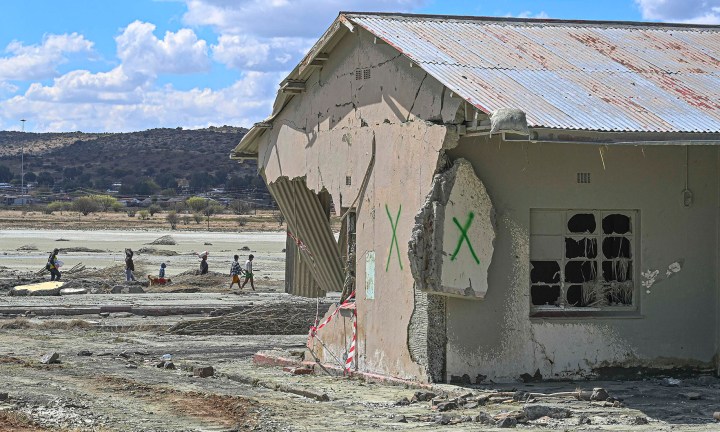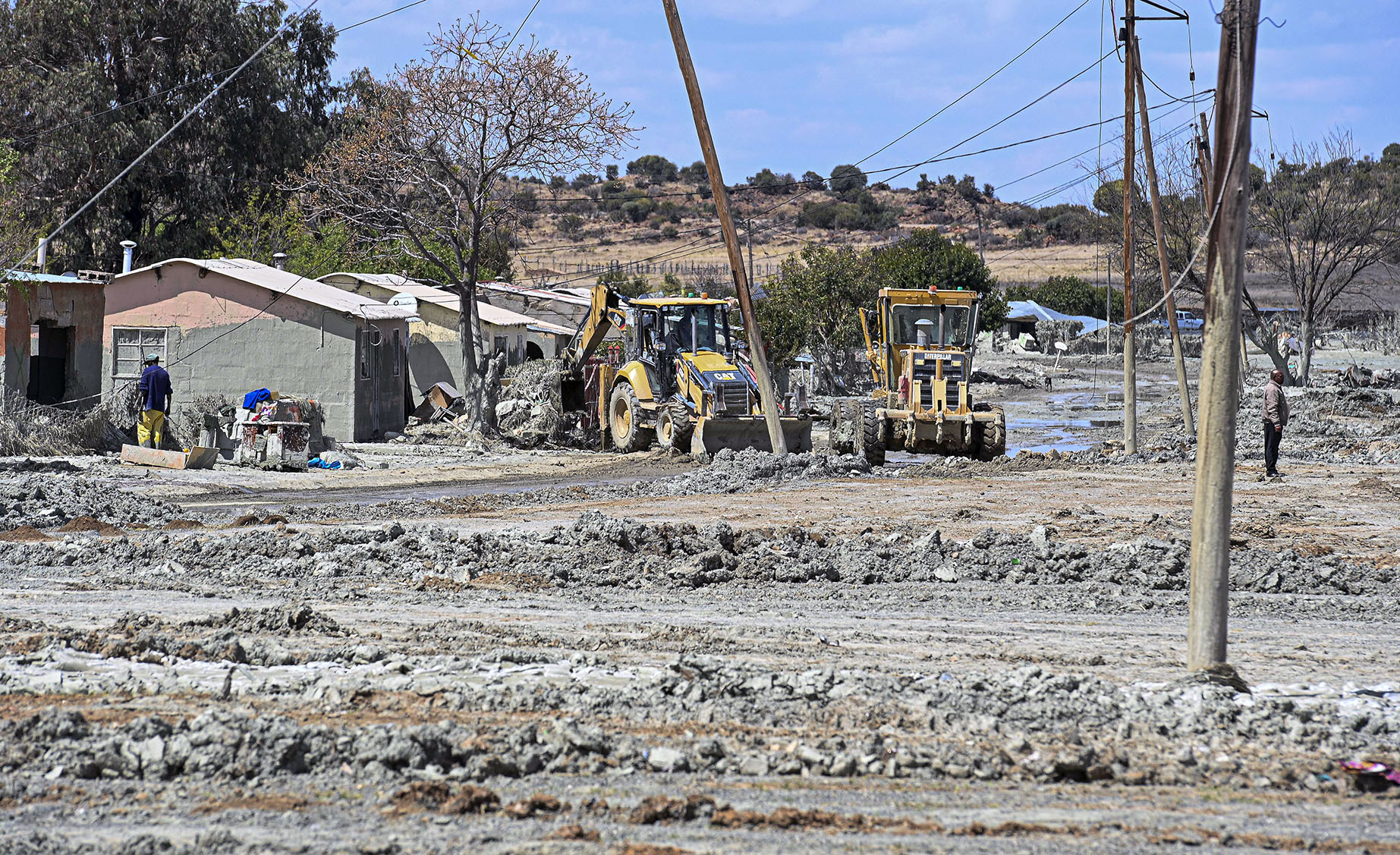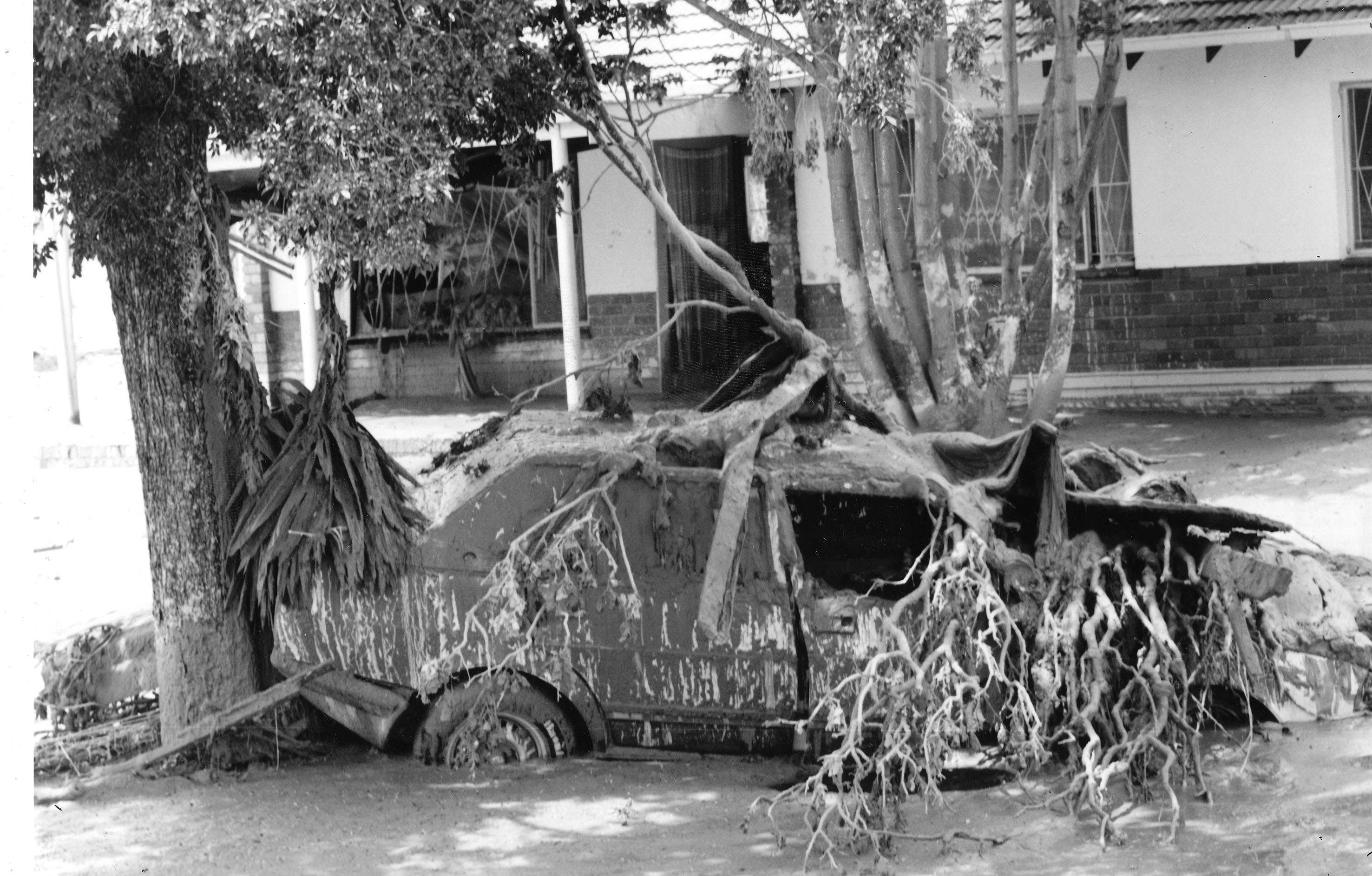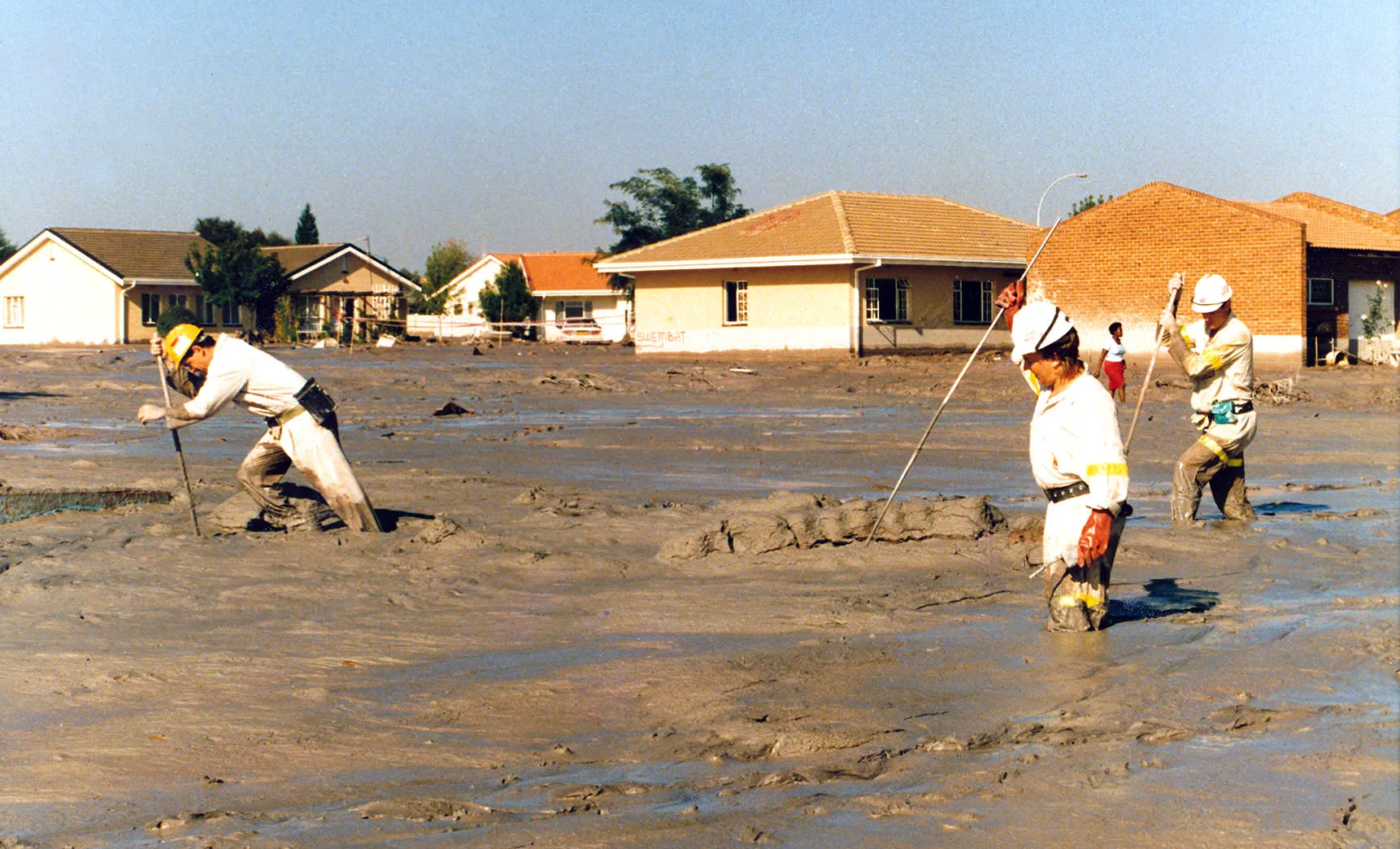MINING SAFETY OP-ED
To prevent dam tailings disasters, heed the call from frontline workers and communities

In 2022, 162 frontline communities, indigenous peoples, labour unions, environmental and human rights organisations, academics and scientists from 32 countries endorsed ‘Safety First: Guidelines for Responsible Mine Tailings Management’. It lays out 17 guidelines to eliminate the riskiest tailings management practices and hold mining companies accountable. Most importantly, it prioritises community consent and oversight for all phases of tailings operations.
In the wake of the disastrous Jagersfontein tailings dam failure that killed at least one person, destroyed at least 164 homes and displaced almost 400 residents, all eyes have turned to South Africa to understand what happened, how this failure could have occurred and what lessons can be learnt to prevent future tragedies.
The essential takeaways from this disaster must be, first, that we cannot continue to allow mining companies to regulate themselves. The mining industry has a tragic history of unsafe tailings facilities around the globe.
Second, that independent experts and frontline workers and communities living adjacent to the mines must have the legal authority to speak and be heard on issues related to tailings safety, and the failure to heed their warnings must have serious consequences for power-holders.
Warnings ignored
In the case of Jagersfontein, various companies that owned the mine, including Jagersfontein Development (Pty) Ltd, ignored warnings from communities, workers and even regulators about the potential instability of their tailings dam.

Earthmoving machinery clears debris after the Jagersfontein tailings dam failure on 21 September 2022. (Photo: Gallo Images / Volksblad / Mlungisi Louw)
The Mayor of Kopanong municipality, Xolani Tseletsel, said he had been raising concerns about the stability of the dam for the past 11 to 12 years.
Community leaders claim their complaints around safety concerns over the years were met with bribes by mining company officials.
The municipality of Kopanong and residents are reportedly pursuing a class action lawsuit against the company in response to the failure.
Recently, night-shift workers at the mine claimed they had alerted management to a crack in the dam wall and management had ignored their warnings.
Local regulators had previously suspended operations at the site over concerns around water management, but allowed operations to resume a year later. The inconsistent and seemingly uncoordinated role of the regulators is a cause for concern and pain for the workers, mining communities and society at large.
The National Union of Mineworkers was quoted as saying that “the Jagersfontein tragedy evokes memories of the February 1994 Merriespruit tailings dam disaster, also in the Free State, in which 17 people were killed and 80 houses destroyed. On that occasion, excessive rainfall was blamed for the tailings dam failure”.

A destroyed car after the 1994 Free State Merriespruit dam disaster. (Photo: Gallo Images / Beeld / Dawid Roux)

Workers in the aftermath of the Free State Merriespruit dam disaster in 1994. (Photo: Gallo Images / Beeld)
Legal loophole
The dam failure highlights an enormous loophole in South African mining law. Because the facility was reprocessing tailings for diamonds instead of extracting virgin ore, it was not classified as a mine. The classification of the site as a reprocessing facility meant the Department of Mineral Resources and Energy did not have regulatory oversight of the operations.
While this is an important issue to resolve, it is not a justification for the authorities to have ignored the voices of communities and the unions. When there are risks of loss of life, injury and potential loss to livelihoods, businesses and homes, governments have the moral and political right to intervene in the public interest.
In the wake of the failure, the mining industry, investors and others have isolated the company currently operating the mine, Jagersfontein Development (Pty) Ltd, as an unlisted outsider that didn’t comply with the Global Industry Standard on Tailings Management (GISTM). They have claimed this 2020 standard promotes safer tailings management practices that are needed to avoid failures.
Visit Daily Maverick’s home page for more news, analysis and investigations
Yet the Jagersfontien failure shows the substantial gaps in the GISTM. While it is not feasible to speculate whether the GISTM could have prevented the failure in the first place, what is clear is that the standard would have done little to protect and compensate communities for the worst of the impacts.
It does not include any regulations on the distance between mines and communities, and the community most affected, Charlesville, was mere metres below the toe of the tailings dam. The standard does not require communities to provide consent for operations or to be actively engaged in oversight of the mine, and at the Jagersfontein mine, residents who have been most impacted were routinely ignored and marginalised by the company.
Finally, while the standard does call for an emergency response plan that is developed with affected communities, it has no details about how indemnification and compensation should be organised after a failure. Communities around the Jagersfontien mine are now expected to begin a negotiation process with the company after having endured the trauma of surviving a tragedy.
The GISTM clearly does not go far enough to rein in dangerous practices. A 2021 exposé showed how mining companies intimidated, and at some points manipulated, the process to develop the GISTM, ultimately favouring the mining industry’s interests.
Safety proposals
Affected communities and civil society have already identified proposals that centre their needs and prioritise safety.
In 2022, 162 frontline communities, indigenous peoples, labour unions, environmental and human rights organisations, academics and scientists from 32 countries endorsed Safety First: Guidelines for Responsible Mine Tailings Management. It lays out 17 guidelines to eliminate the riskiest tailings management practices and hold mining companies accountable. Most importantly, it prioritises community consent and oversight for all phases of tailings operations.
Effective tailings management is impossible without civil society oversight. Communities and workers must have a seat at the table where decisions are made, they must provide consent for decisions that would affect their lives and livelihoods, and their concerns must not be ignored.
Operating companies must make all information relevant to the safety and stability of tailings facilities publicly available and governments must make safety the primary consideration in tailings facilities and dam design, construction, operation, closure and post-closure, and those measures must be independently verified. DM/MC
Hassen Lorgat works with Bench Marks Foundation and is the manager of media and advocacy. He is currently the convenor of the South African Tailings Working Group, a group of civil society activists working in the field of tailings.
Jan Morril is the Tailings Campaign Manager at Earthworks. Jan works with communities around the world directly affected by dangerous tailings storage facilities, including in Brazil, the Dominican Republic, South Africa and beyond. She seeks to elevate best practices in tailings storage on a local, regional and international level and is a co-author of Safety First: Guidelines for Responsible Mine Tailings Management.




















 Become an Insider
Become an Insider
Comments - Please login in order to comment.